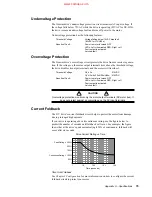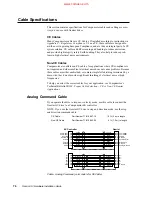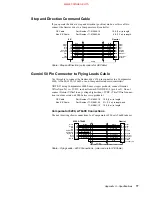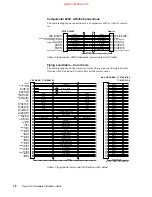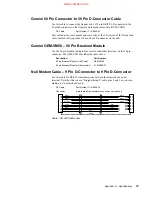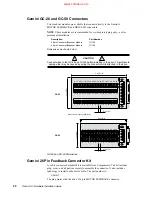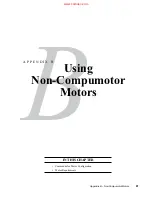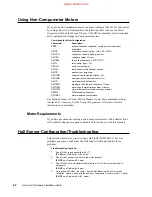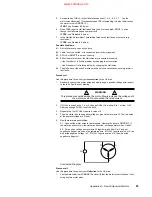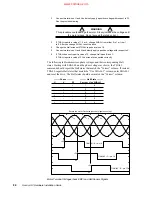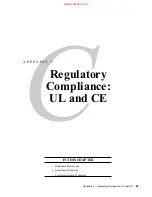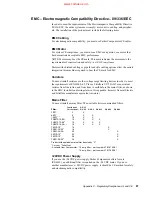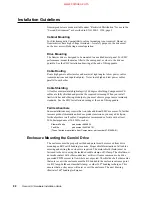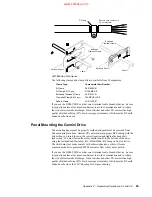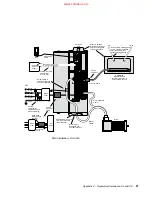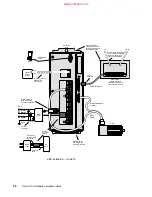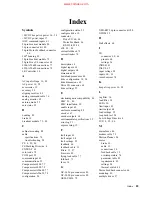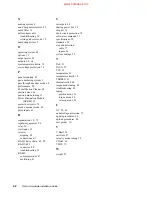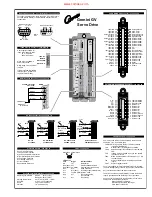
82
Gemini GV Hardware Installation Guide
Using Non-Compumotor Motors
If you use a non-Compumotor motor, you must configure the drive for your motor
by setting values for all commands in the following table. Also see the Motor
Parameters table on the Motion Planner CD-ROM for examples of recommended
drive configuration settings for Compumotor motors.
Commands for Motor Configuration
Command:
Description:
ERES
encoder feedback resolution; counts per revolution, post-
quadrature
DMTIC
continuous current; amps – rms, 40
°
C (104
°
F)
DMTICD
continuous current derating; percent
DMTKE
voltage constant; V/krpm
DMTRES
line-to-line resistance; at 25
°
C (77
°
F)
DMTJ
rotor inertia; kg-m
2
*10
-6
DPOLE
number of pole pairs
DMTW
rated speed; revolutions per second
DMTIP
peak current; amps rms
DMTLMN
minimum line-to-line inductance; mH
DMTLMX
maximum line-to-line inductance; mH
DMTD
motor damping; nM/rad/sec
DMTRWC
winding to case thermal resistance;
°
C/watt
DMTTCM
motor case thermal time constant; minutes
DMTTCW
motor winding thermal time constant; minutes
DPWM
PWM switching frequency
DMTMAX
motor maximum temperature
Use Motion Planner or Pocket Motion Planner to enter these command settings
into the drive’s memory. See the Gemini Programmer’s Reference for more
information on commands.
Motor Requirements
If you have questions about using a non-Compumotor motor with a Gemini drive,
call Technical Support (see phone numbers on the inside cover of this manual).
Hall Sensor Configuration/Troubleshooting
This section will assist you in resolving a Hall fault (TASX Bit 21). Several
problems can cause a Hall fault. The following list will help identify these
problems.
Troubleshooting Checklist:
1.
Does THALL report back either 0 or 7?
IF YES: see Problem #1 or #2, below.
2.
Does THALL change if you move the motor by hand?
IF NOT: see Problem #2, below.
3.
Does THALL have six distinct Hall states from 1 to 6? (No numerical order is
necessary.)
IF NOT: see Problem #2, below.
4.
As reported by THALL, are there
n times 6 Hall states as the rotor turns one
revolution, where
n is equal to the number of pole-pairs. (Linear motors: n = pitch)
IF NOT: see Problem #2 or #3, below.
www.comoso.com








